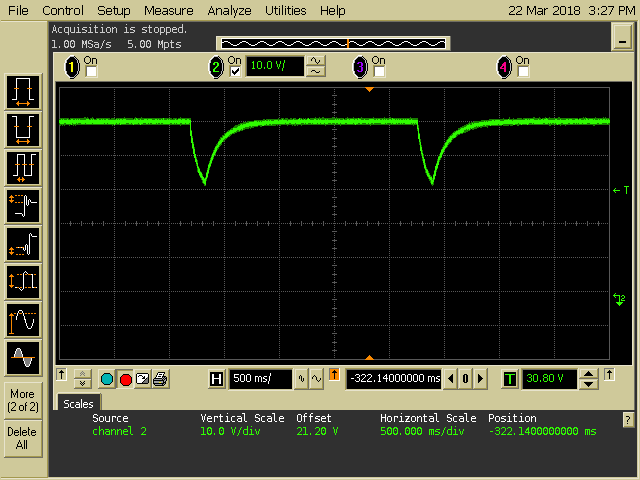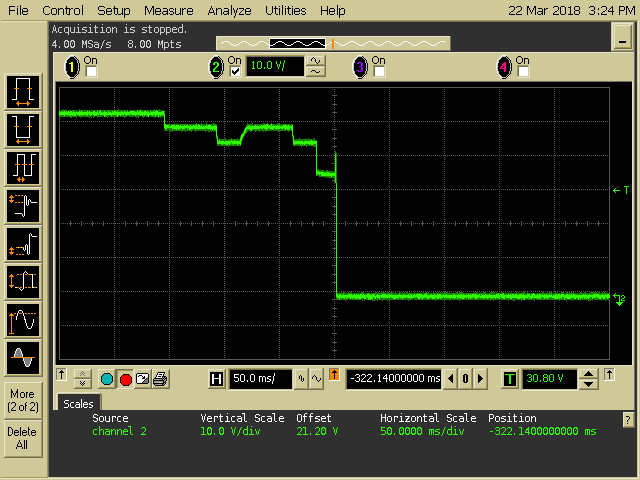Other Parts Discussed in Thread: TPS23861, TPS2388
Hello,
We've designed a board using the TPS2384 as a PSE for two ethernet ports on the device. The board is in production and I've been using the Fluke Linkrunner AT 2000 as a tester for in-process QC. The tester checks the following
- Class - asks for a specific class (can choose 0-4) and makes sure it's received
- Mode - checks which pairs power is present on
- Unloaded voltage - checks PoE voltage with no load applied
- Loaded voltage - checks PoE voltage with load applied (load is sized according to the class selected)
I have a handful of boards that fail on only one port (often multiple failure modes mentioned above). The same ports power other PDs fine (I have two different IP cameras - class 0 and class 2 - that have been working on failing ports for days).
Port Status Read 2, Register Select = 0101 reports "other fault (101)". PSE voltage is 53V as designed.
When I probe the N pin of a failing port I'm getting the following:
Discovery
Classification and power on
Then I see constant removal and application of power
I'm assuming the tester is just trying over and over again. The only consistent failure mode I've seen is the failing port unable to deliver as much power as the non-failing port. Failing ports won't give me more than 13W when testing class 4, but a good port provide the upto 20W (even though it's only a type 1 PSE).
Any ideas or debugging suggestions?




